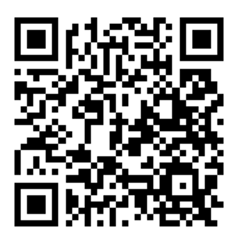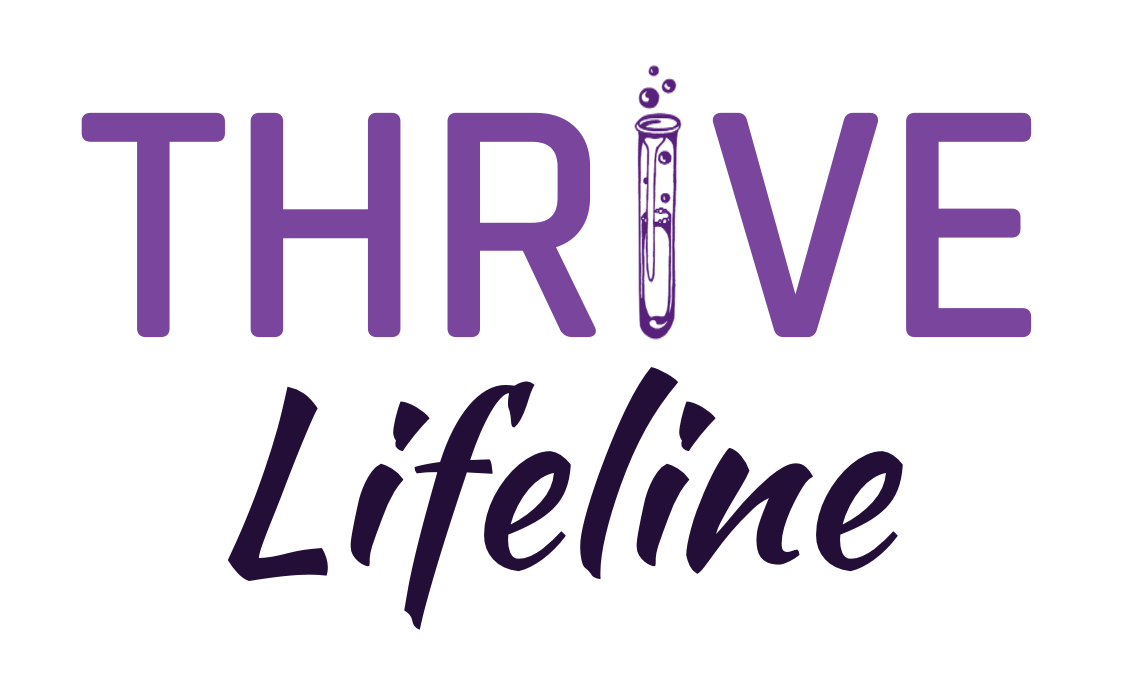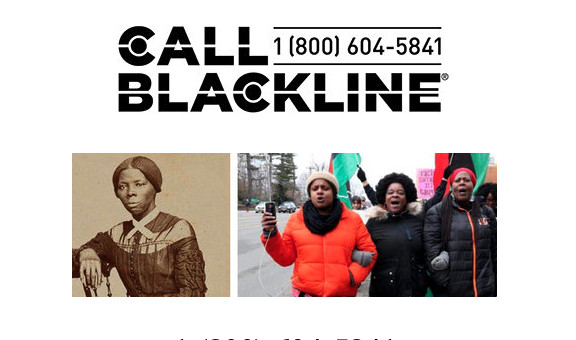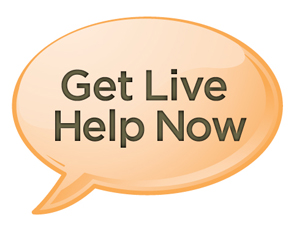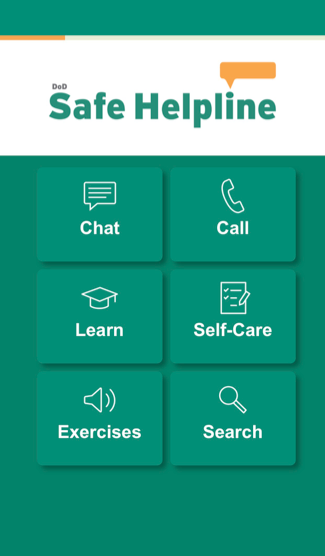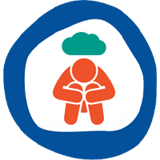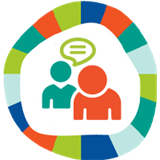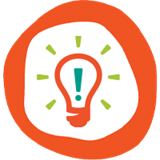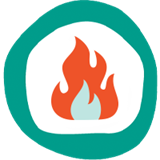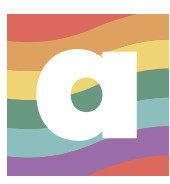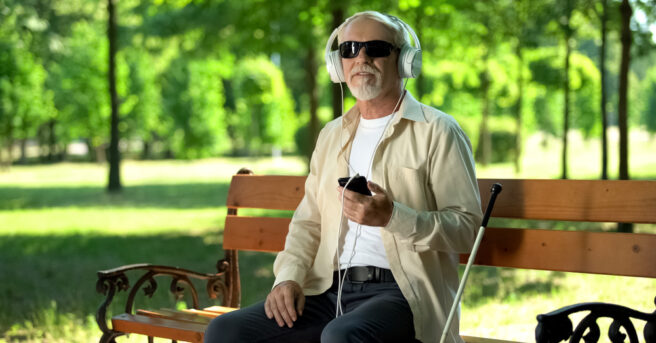What is Autism?
What you should know
Autism is a severe developmental disorder that affects the way a child sees and interacts with the rest of the world. It limits their ability to interact with others socially, in fact many autism suffers avoid human contact.
Autism is part of a larger group of disorders called pervasive developmental disorders (PDD). More information about autism: Click on each of these links
Autism-Definition
Autism is a developmental disability that comes from a neurological disorder that affects the normal functioning of the brain. It is characterized by the abnormal development of communication skills, social skills, and reasoning. Males are affected four times as often as females. Children may appear normal until around the age of 30 months.
Click each of these following titles learn more….
Autism Symptoms
Autism Symptoms vary widely in severity, include impairment in social interaction, fixation on inanimate objects, inability to communicate normally, and resistance to changes in daily routine. Characteristic traits include lack of eye contact, repetition of words or phrases, unmotivated tantrums, inability to express needs verbally, and insensitivity to pain.
Behaviors may change over time. Autistic children often have other disorders of brain function; about two thirds are mentally retarded; over one quarter develop seizures.
What Autism is Not
Autism can be confused with several other disorders which may have similar behaviors. Here is a list of autism like disorders that you should look at.
What Causes Autism
It remains unclear, but a psychological one has been ruled out. Neurological studies seem to indicate a primary brain dysfunction, and a genetic component is suggested by a pattern of autism in some families. It is largely believed that autism is a genetic disorder that involves several genes related to gene function. However it is unclear to researchers what causes these genes to turn on. Learn more about other causes of autism.
Autism Research
There are many exciting developments in autism research going on at the top universities. They are focusing on inherited autism and autism gene research.
Other Autism Spectrum Disorders
Asperger’s Syndrome – A child with asperger’s disorder has the same common problems as children with autism however they don’t have language development problems of a autistic child.
Pervasive Developmental Disorder and not otherwise specified (PDD-NOS) – This child has autism but doesn’t meet the criteria for high functioning autism.
High-Functioning Autism – This child has autism but has normal learning and cognitive and learning skills. Language development is difficult initially but they become proficient eventually.
FAQ about Autism Special Education and IEP
This is an important list of questions and answers to help you deal with special education issues at your school.
Autism Tips for working with Teachers
This is a great check list of items to be aware of when you work with your child’s teacher and your child’s Individual Education Plan.
Tip: Go to our Autism education discussion boards and post a question with other parents.
Early Origins of Autism
ADDITIONAL LINKS TO RESOURCES AND EXPERTISE
Ask an Expert on Autism
Health Finder
Talk to Autism Expert
National Institutes of Mental Health
Combined Health Information Database
Abstracts on Autism
Searchable Directory of Autism Resources
CLICK HERE TO VISIT THE DIRECTORY PAGE
Or Click on the Topic area directly below
Adult Resources
Attorneys & Advocates
Behavior/Family Training
Community Living
Education
Medical Providers/Diagnosis
Non-English Resources
Respite Care Providers
Safety
Sports & Camps
Therapy Providers
Autism NOW Center’s fact sheets on topics of importance to people with autism spectrum disorders and other developmental disabilities are a resource you and your family members, as well as educators, employers, physicians and others, can use to get information in an easy-to-read and understand format. The fact sheets are available in several languages in PDF form which can be printed out for your convenience. See the full list of topics and language choices below.
English:
Spanish:
Find the resources you need 1-885-828-847
Article Links
Follow this page link for listings of over 800 articles and resources
https://autismnow.org/resources/
Interagency Autism Coordination Committee
About Autism
Autism spectrum disorder (ASD) is a developmental disability that is estimated to affect about 1 in 36 children and approximately 2.21% of adults. Autism affects the way a person experiences the world and can result in significant challenges in social communication and interaction, as well as repetitive behaviors and unusual or intense interests.
People on the autism spectrum often have a strong preference for routines and predictability, and some are challenged in adapting to change. Many people on the autism spectrum experience sensory differences, including high or low sensitivity to sounds, light, textures, tastes, and physical touch. Some have accompanying language and/or intellectual disabilities, and some may be intellectually gifted or possess other unique abilities, talents, or strengths.
ASD can be diagnosed at any age, but differences generally appear in the first two years of life. ASD is known as a “spectrum” condition because it encompasses a wide variation in the type, combination, and severity of disabilities, as a well as a range of unique abilities and strengths, many of which can change over the course of a person’s lifespan. The type and intensity of supports and services that a child or adult on the autism spectrum may require, ranging from minimal to intensive, will vary depending on their unique needs.
With appropriate supports and an environment that promotes inclusion, acceptance, and empowerment, people on the autism spectrum can fully participate in community life and achieve their full potential.
This page includes resources that provide general information about autism.
Websites and Programs
The Autistic Self Advocacy Network was created by autistic people and for autistic people. This page provides an overview of typical characteristics of autism.
More Websites and Programs
Toolkits and Guides
This tool kit provides families of children ages four and under with guidance on how to access services the first 100 days after an autism diagnosis.
More Toolkits and Guides
Reports
March 2020
This report from provides an overview of 2016 data collected by the Autism and Developmental Disabilities Monitoring (ADDM) Network and Early ADDM. ADDM provides estimates of the prevalence of ASD among 8-year-old children. Early ADDM estimates ASD prevalence and monitors early identification of 4-year-old children. Full findings of the data on 8-year-old and 4-year-old children are available.
March 2020
The CDC released their first estimate of the prevalence of autism in adults based on 2017 data. They estimated that 2.21 percent of adults in the United States have ASD.
More Reports
Videos
April 24, 2019
NIMH Director Joshua Gordon, M.D., Ph.D. interviews Ann Wagner, Ph.D., National Autism Coordinator, and Lisa Gilotty, Ph.D., program chief of NIMH’s chief of NIMH’s Research Program on Autism Spectrum Disorders, to discuss advances on the study of autism in adulthood.
Federal Departments and Agencies
This list includes federal departments and agencies that provide funding, programs, and support for issues related to autism and other developmental disabilities.
- U.S. Department of Defense (DOD)
- U.S. Department of Education (ED)
- Office of Special Education and Rehabilitative Services (OSERS) OSERS supports programs that serve millions of children, youth and adults with disabilities. These programs include school-based services and pre-employment services. The IDEA website provides resources and information on the Individuals with Disabilities Education Act, which guarantees every child the right to a free appropriate public education (FAPE).
- The Institute of Education Sciences (IES) IES is the statistics, research, and evaluation arm of the U.S. Department of Education. Their mission is to provide scientific evidence on which to ground education practice and policy and to share this information in formats that are useful and accessible to educators, parents, policymakers, researchers, and the public. IES supports research on education for children with disabilities.
- The Rehabilitation Services Administration (RSA) RSA provides leadership and resources to assist state and other agencies in providing vocational rehabilitation and other services to individuals with disabilities to maximize their employment, independence, and integration into the community and the competitive labor market.
- U.S. Department of Health and Human Services (HHS)
- Autism Information HHS’ mission is to enhance the health and well-being of all Americans by providing essential health and human services and fostering advances in science, medicine, and social services. This page provides a general overview of autism, including signs, screening and diagnosis, and more.
- Administration for Children and Families (ACF)
- Autism Awareness and Acceptance in Early Childhood Education ACF promotes the economic and social well-being of children, families, individuals, and communities. This page highlights the role of early care and education providers and the services that are available to children with ASD under the Individuals with Disabilities Education Act (IDEA).
- Birth to 5: Watch Me Thrive! Birth to 5: Watch Me Thrive! is a coordinated federal effort to encourage healthy child development, universal developmental and behavioral screening for children, and support for the families and providers who care for them. This page includes guides tailored towards early care and education providers, service providers, families, and more.
- Administration for Community Living (ACL)
- Agency for Healthcare Research and Quality (AHRQ)
- Center for Evidence and Practice Improvement (CEPI) AHRQ is charged with improving the safety and quality of America’s healthcare system through research, tools and training, and data. This center’s mission is to conduct and support research that can improve the quality of health care patients receive and ultimately help patients and clinicians make health care decisions based on evidence about what works best. They operate the National Center for Excellence in Primary Care Research.
- Office of Extramural Research, Education, and Priority Populations (OEREP) OEREP directs the scientific review process for grants and contracts, manages Agency research training programs, evaluates the scientific contribution of proposed and ongoing research and demonstrations, and supports and conducts health services research on priority populations.
- Centers for Disease Control and Prevention (CDC)
- Autism Spectrum Disorder The CDC is responsible for tracking the prevalence rate of autism and strives to identify autism as early as possible. This page highlights this work and their Learn The Signs. Act Early. program, which helps parents track their child’s developmental milestones.
- Centers for Medicare and Medicaid Services (CMS)
- Autism Services CMS administers the Medicare program and works with state governors to administer Medicaid, the Children’s Health Insurance Program (CHIP), and health insurance policy standards. Autism services and supports are available through Medicaid.
- Home and Community-Based Services (HCBS) HCBS waivers allow participating states to deliver services to people in their community rather than in an institutionalized setting. This page includes information about the programs that are covered by HSBS waivers.
- Health Resources and Services Administration (HRSA)
- Autism The Maternal and Child Health Bureau at HRSA works to improve the well-being of mothers, children, and families. They address autism through education, early detection, and intervention. Their efforts include training for professionals, improving access to services, and promoting interdisciplinary research on effective interventions.
- Indian Health Service (IHS)
- Autism IHS provides federal health services to American Indians and Alaska Natives (AI/AN). This page highlights their autism initiatives.
- National Institutes of Health (NIH)
- The National Institutes of Health (NIH) is the nation’s medical research agency — making important discoveries that improve health and save lives.
- Eunice Kennedy Shriver National Institute of Child Health and Human Development (NICHD)
- Autism Spectrum Disorder NICHD researches what causes autism, how to recognize the signs, and intervention approaches. This page gives an overview of ASD.
- National Human Genome Research Institute (NHGRI)
- About Autism NHGRI focuses on advances in genomics research. This page describes the role of genetics in autism.
- National Institute of Dental and Craniofacial Research (NICDR)
- Developmental Disabilities and Oral Health NICDR strives to improve dental, oral, and craniofacial health by supporting research. This page provides an overview of challenges to oral hygiene that people with autism and other developmental disabilities may experience and provides tips for caregivers and dental professionals.
- National Institute of Environmental Health Sciences (NIEHS)
- Autism NIEHS studies environmental factors thought to contribute to the development of autism. This page provides an overview of these factors and describes large-scale studies.
- National Institute of Mental Health (NIMH)
- Autism Spectrum Disorder NIMH strives to understand the underlying basis of autism and conducts clinical trials for new screening approaches and interventions. This page describes signs and characteristics of autism, underlying causes, diagnosis, and interventions.
- NDA The National Data Archive (NDA) is an NIMH-funded data repository that aims to accelerate progress on mental health disorder research through data sharing, data harmonization, and the reporting of research results. The NDA contains a large set of de-identified human subjects data from studies on autism, as well as other resources, that are available to qualified researchers for the purpose of advancing autism research.
- National Institute of Neurological Disorders and Stroke (NINDS)
- Autism Spectrum Disorder NINDS conducts research to better understand the neurological basis of autism and to improve early identification and interventions. This page provides an overview of autism.
- National Institute on Deafness and Other Communication Disorders (NIDCD)
- U.S. National Library of Medicine (NLM) MedlinePlus
- Autism Spectrum Disorder The NLM provides an overview of autism as well as resources such as health tools, statistics and research, and information on clinical trials.
- Substance Abuse and Mental Health Services (SAMHSA)
- About SAMHSA SAMHSA leads public health efforts to advance the behavioral health of the nation through reducing the impact of substance abuse and mental illness.
- U.S. Food and Drug Administration (FDA)
- About FDA The FDA is responsible for ensuring the safety, efficacy, and security of drugs, biological products, and medical devices; and for ensuring the safety of our nation’s food supply, cosmetics, and products that emit radiation.
- U.S. Department of Housing and Urban Development (HUD)
- Office of Fair Housing/Equal Opportunity (FHEO) FHEO works to eliminate housing discrimination, promote economic opportunity, and achieve diverse, inclusive communities. FHEO enforces and develops federal fair housing policies and laws.
- Office of Housing The Office of Housing operates the Federal Housing Administration (FHA) to provide mortgage insurance, manages HUD’s rental assistance programs for low and very low income households, and supports programs that provide housing for the elderly (Section 202) and people with disabilities (Section 811).
- Office of Public and Indian Housing (PIH) PIH’s mission is to ensure safe, decent and affordable housing; create opportunities for residents’ self-sufficiency and economic independence; and to assure the fiscal integrity of program participants. Individuals can check out their local Public Housing Agency (PHA) to find affordable housing near them.
- U.S. Department of the Interior (DOI)
- U.S. Environmental Protection Agency (EPA) The EPA works to ensure that Americans have clean air, land, and water; they also work to reduce environmental risks and enforce laws and policies that protect health and the environment. This page highlights how people can keep themselves and their families safe from environmental hazards.
- U.S. Department of Justice (DOJ)
- Bureau of Justice Assistance (BJA) BJA provides grants, training and technical assistance, and policy development services to state, local, and tribal governments in order to build safer communities. BJA administers programs related to safety for people with disability.
- U.S. Department of Labor (DOL)
- Office of Disability Employment Policy (ODEP) ODEP’s mission is to develop and influence policies and practices that increase the number and quality of employment opportunities for people with disabilities. Their Autism page includes a listing of programs that support employers, job seekers on the autism spectrum, service providers, and policy makers.
- U.S. Department of State
- U.S. Agency for International Development (USAID)
- Disability Programming USAID promotes the inclusion of people with disabilities across all USAID-funded work. USAID’s Disability Program Fund has supported more than 150 programs and activities in 65 countries. Program areas include democracy, human rights, and governance; economic growth and trade; and education; among others.
- Disability Rights, Physical Rehabilitation, and Assistive Technologies USAID’s Bureau for Development, Democracy, and Innovation (DDI) supports efforts to include marginalized people, such as those with disabilities, in every aspect of society. This includes their commitment to supporting disability rights in other nations. USAID is also committed to improving access to physical rehabilitation services and assistive technology. This page describes their programs that support these efforts.
- U.S. Department of Transportation (DOT)
- U.S. Department of Veterans Affairs (VA)
- Office of Research and Development (ORD) The VA supports a variety of research to enhance the well-being of Veterans and the nation. ORD invests in basic science, rehabilitation, clinical, and health services research. Past research has included the neurobiology of autism.
Independent Agencies
- National Council on Disability (NCD)
- Meetings and Events The NCD is an independent federal agency that advises the President, Congress, and other federal agencies on policies, programs, practices, and procedures that affect people with disabilities. Their meetings are open to the public.
- Resources This page includes information on disability rights and links to resources and services on education, employment, financial assistance and incentives, health care, housing, and more.
- National Science Foundation (NSF)
- About NSF The NSF is an independent federal agency that supports fundamental research and education in all non-medical fields of science and engineering.
- Social Security Administration (SSA)
- Disability Benefits The Social Security and Supplemental Security Income (SSI) disability programs provide assistance to people with disabilities. This page explains these benefits and the application process.
- Spotlight on Achieving a Better Life Experience (ABLE) Accounts Achieving a Better Life Experience Act (ABLE) allows individuals with disabilities to make tax-free saving accounts to cover qualified disability expenses. Individuals can save up to $100,000 without counting against their Supplemental Security Income (SSI) eligibility.
Transition from youth to adulthood
Websites and Programs
More Websites and Programs
Toolkits and Guides
ASAN partnered with the Family Network on Disabilities to produce this guide, which prepares transition age youth for adulthood. The first half provides information on preparing for transition and the second half gives in-depth information on post-secondary education, employment, housing and independent living, and healthcare.
More Toolkits and Guides
Reports
March 22, 2018
This report examines guardianship and makes recommendations for its use. Recommendations are based on disability law and policy, how people with disabilities are treated in the legal system, alternatives to guardianship, and the Americans with Disabilities Act (ADA).
March 13, 2019
This report describes the demographics, disability, education, and health characteristics of teens and young adults ages 12-23 on the autism spectrum.
More Reports
Research Articles
More Research Articles
Videos
March 23, 2020
This webinar provided information about supports and resources to improve access to competitive, integrated employment for youth and young adults on the autism spectrum and enhance their career pathways.
Employment
National data has shown that many autistic adults are unemployed or underemployed, even when compared to people with other disabilities and in spite of having needed skills and abilities for the workplace. Researchers and policy makers have worked to develop programs that can increase opportunities for employment and improve employment outcomes. This includes job training and recruitment programs, as well as supports for employees and employers to increase retention and success in the workplace. This page provides information related to employment for people with autism and other disabilities.
Websites and Programs
This program helps public and private sectors recruit, hire, train, and retain job seekers with intellectual and developmental disabilities.
More Websites and Programs
Toolkits and Guides
This plain language toolkit explains the existing policies that help people with disabilities people find and keep good jobs, and solve employment problems.
More Toolkits and Guides
Reports
October 9, 2018
Of the 74 state vocational rehabilitation (VR) agencies that responded to GAO’s survey, most reported expanding services to help students with disabilities transition from school to work as required under the Workforce Innovation and Opportunity Act (WIOA), enacted in July 2014. Most state agencies reported serving more students and providing work-based learning experiences and other activities.
May 12, 2020
Researchers analyzed Rehabilitation Services Administration data to determine the association of vocational rehabilitation services with employment outcomes for students ages 16-21. Students with autism were less likely to receive job-related services less than comparison groups.
More Reports
Research Articles
More Research Articles
Videos
March 23, 2020
In this webinar, Scott Michael Robertson Ph.D. provides information about government supports and resources that help youth and young adults with autism access competitive, integrated employment and enhance their careers. Full Transition Aged Youth Webinar Series.
Housing
Housing plays an important role in ensuring the well being of people on the autism spectrum and helping them integrate into the community. Some people can live independently with minimal or no supports, while others require high levels of support. There is a variety of federal and private resources that can enable people to live in settings that best fit their needs. This page provides information about models of housing for people with disabilities and resources and programs related to disability housing.
Websites and Programs
- Medicaid.Gov
- Home & Community Based Services This page provides information on Home and Community-Based Services (HCBS) regulations. The page includes a training series for stakeholders, transition plans for individual states, technical assistance, and more. The Final Regulation page provides an overview of rules and regulations states must follow when providing HCBS under Medicaid.
- The Arc
- Housing Overview This page provides an overview of housing issues that people with intellectual and developmental disabilities (I/DD) encounter as well the Arc’s advocacy efforts. The page also describes key federal housing initiatives that enable people with I/DD to live in the community and links to additional resources.
More Websites and Programs
Toolkits and Guides
This handbook is designed to help people with disabilities find and use resources that promote independent living. It includes information on support services and waivers, housing, employment, and community resources. This handbook was created in partnership with Autism NOW Center.
More Toolkits and Guides
Reports
May 24, 2019
This report that examines occurrences of institutionalization of people with disabilities, as well as thwarted threats of institutionalization, during hurricanes and the California wildfires in 2017 and 2018. The NCD found that people with disabilities are frequently institutionalized during and after disasters due to conflicting federal guidance; a lack of equal access to emergency and disaster-related programs and services; and a lack of compliance with federal law.
June 2018
The Residential Information Systems Project (RISP) studies trends in residential service settings, funding, and expenditures for people with intellectual and developmental disabilities in the United States. The most recent report uses data through Fiscal Year 2016.
More Reports
Research Articles
More Research Articles
Videos
July 23, 2019
This workshop focused on the housing needs of people on the autism spectrum and included examples of various housing models. Meeting details.
July 26, 2017
JaLynn Prince, Adrienne McBride, and Desiree Kameka present Madison House Autism Foundation’s Autism After 21 initiative. Madison House aims to raise awareness of the abilities of and issues facing adults with autism. They also promote housing options for adults with autism and other I/DD through the Autism Housing Network. Meeting details.
For Service Providers and Public Services
Unlocking Potential: Innovative Library Programs Enhancing the Lives of Autistic Individuals
http://librarysciencedegreesonline.org/libraries-and-autism/
Making Entertainment and Public Spaces More Autistim-Friendly
https://happiful.com/making-entertainment-and-public-spaces-more-autistic-friendly









